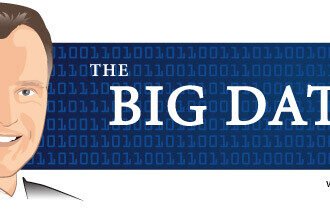Over the last few years, the demand for student loans and financial aid has significantly increased as many employers are now dismissing applicants who are without college educations. While this was always the case for certain niches in the past, it’s becoming an increasingly popular practice even among retail and part-time positions that usually don’t have such harsh restrictions on their employees.
The problem is that many people are struggling to get financial aid. Fortunately, big data is simplifying the process.
How Big Data Makes it Easier for Students to Secure Financial Aid
A couple of years ago, the Heching Report wrote a very intriguing piece about the impact big data has made on the college admissions process. They said that big data has made it much easier for people to project students’ likelihood of success.
“Using an IBM statistical analysis program, Yuko Mulugetta, Ithaca’s director of enrollment planning and self-styled “in-house statistician,” studied data collected from IC PEERS to see which students employing what behaviors were most likely to enroll and stay at Ithaca — how many photos they uploaded to their profiles, for instance, and how many IC PEERS friends they made.”
Big data has started playing an important role in financial aid applications as well. Bucknell University developed a new program that relies on big data to decide how much aid should be allocated to students.
Since big data makes it easier for students to secure the right funding, they shouldn’t have any excuses for not getting the most they can qualify for. Those who are looking to apply for student loans to further their education any time soon really need to reevaluate their situation before they jump headfirst into the financial aid paperwork. More than ever before, college applicants should do their best to put as much money as possible into high interest bank accounts long before they put their signature down on the student loan forms. They need to take the time and effort to compare checking accounts to see which ones will give them the best interest rates in the years before they begin looking into colleges.
While the money for student loans is technically available for new college applicants, that isn’t necessarily the problem. The interest rate for those who are paying back their financial aid debt has risen considerably over the years and it’s expected to rise once again very soon, which puts a heavy amount of strain onto those who have thousands of dollars in student loan debt.
Although the cost of paying back these loans has risen, the amount of jobs available in the economy for recent college graduates have not followed suit, leaving many unemployed. These economic conditions have made it extremely difficult for alumni to find steady employment in the years following their graduation.
Although more jobs now require college degrees to be considered, going to school is a gamble because of the way the economy is placed at the moment. People must have an education to be considered for a job, but that degree won’t necessarily guarantee them employment.
Because of this, it’s important that people look into alternative ways to pay for their college educations. While grants are typically available for every student entering an educational institution, some of them can be quite small – only a few hundred dollars at most – and don’t really make a big dent in the debt that will be piling up later.
In addition to putting money into the aforementioned high-yield interest accounts, incoming students should be looking into garnering as many scholarships as possible. The easiest way for students to find information about various scholarships is to visit websites such as FastWeb, which will list all of the current scholarships available to new college applicants as well as all of the requirements for applying for them.
Additionally, if the applicant still has a few years before they’re thinking of entering college, they would do well to raise the GPA as high as possible. There are a lot of grants and scholarships available for those students who excel in their studies and being in the top five percent of peers will significantly increase their chances of being chosen for these funds.
The truth of the matter is that college can be quite expensive and with the current turn of the economy, the chances of paying off the debt that will be incurred from the student loans anytime soon are very slim.
Although the money is available for mostly everyone who requires it, the interest rates are extremely high and are projected to increase over time, making it even more difficult for graduates to get out of debt. It’s imperative that they do everything they can to save up as much as possible for their tuition before they put through their financial aid paperwork.
Big Data is a Gamechanger for Student Financial Aid
Big data is changing education in many unanticipated ways. Schools will have an easier time using big data to make actuarial decisions on awarding aid to students based on their degree of choice, GPA, SAT scores and other variables.







